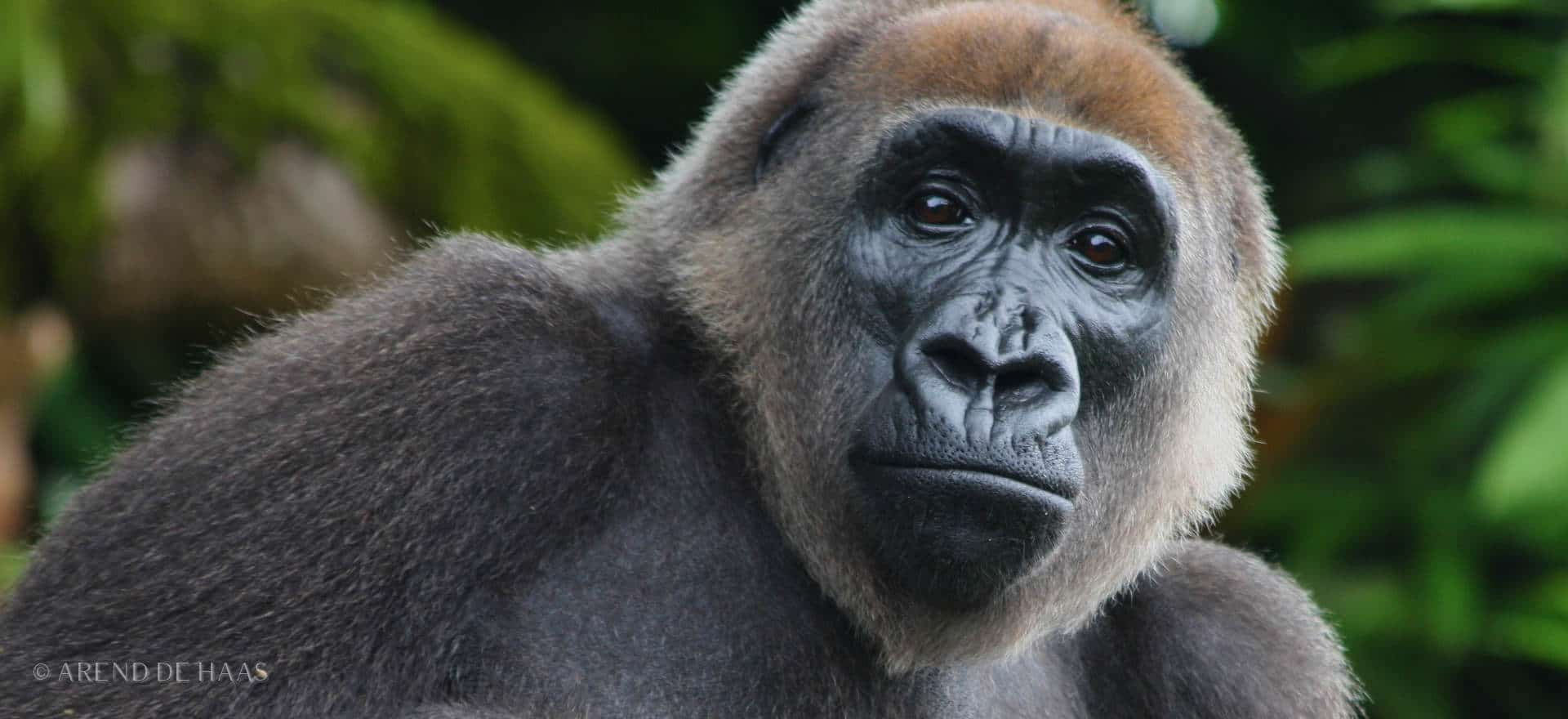CROSS RIVER GORILLA SOCIO-ECOLOGY AND BEHAVIOUR
Cross River Gorillas usually live in groups of four to seven individuals, although larger groups do exist. The Afi study group usually consists of 18 gorillas, which roam in about 30km2, a larger range than is usual for Western Lowland Gorillas. Over a three month period the group follows a cyclical route around this area, varying the intensity with which they use each part according to the availability of food, and predation pressure. This group formed foraging subgroups for one or more days, particularly when feeding on widely dispersed fruits and herbs, and reformed as a super-group, often during rest periods.
The Kagwene gorillas also appear to have similarly flexible grouping patterns, since considerable variety has been seen in nest group sizes. (13) Here the gorillas moved around an area of about 19km2. At both Afi and Kagwene the mean daily range was 1km2. In both of these study sites, nests were more often constructed in trees than has been reported for Western Lowland Gorillas.
Cross River Gorillas have been seen to throw clumps of earth and tree branches at humans, an unusual behaviour for gorillas, much more often seen in chimpanzees.
Tool Use
There are six basic types of tool use that have been found in primates. One of these has been witnessed in the Cross River Gorilla- clumps of earth and tree branches were thrown at people on three occasions at Kagwene. It is possible that this behaviour was learnt from humans, since in one case the researchers saw a man initiate the behaviour by throwing stones at the gorillas. The gorillas in this region do live in closer proximity to humans than many other gorillas, and this could have led to their adoption of this tactic.

